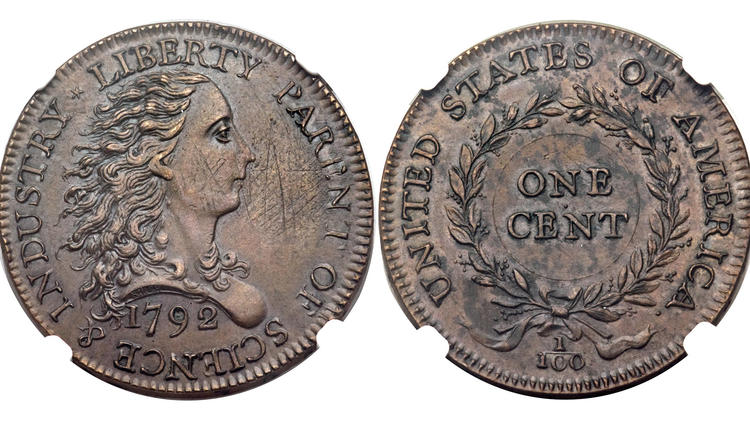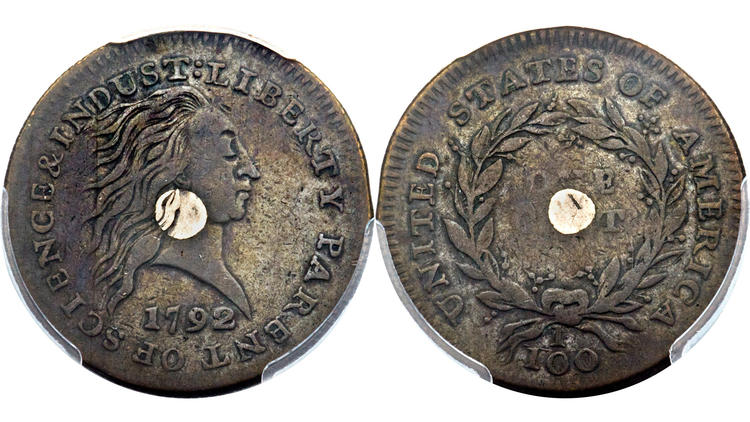Colonial Large Cents Sell for $870,000
In the earliest days of our republic, one-cent coins were not one of the smallest sized coins like today's modern pennies are. Instead, these Large Cents (as they are known in American numismatics) measured between 26 and 29 mm across in diameter, about the size of a contemporary half dollar coin.
A pair of these Large Cents, each dating to 1792—the first year that proposed federally-issued coins were struck as test patterns—were expected to realize almost $1 million combined at an auction at this week's ANA World's Fair of Money coin show held in Anaheim, California.
Details of the auction from Wednesday reveal a final sale price of $869,500, not far from initial estimates.
Exceedingly Rare
The two coins, a 1792 Birch cent and 1792 Silver Center Cent, were both patterns the predate the first U.S. coins that widely circulated. (The latter sold for $352,500, one of just 13 of its kind in existence, while the former realized $517,000, one of only 12 known.)
Birch Cent and Silver Center Cent, both of which are among the rarest U.S. coins in history (as well as the oldest that date after the colonial period)

Although the auction price fell slightly short of expectations, roughly $870,000 is nothing to sneeze at.
According to a spokesman for Heritage Auctions, "We're looking at two coins that sold for more than 43 million times their face value, so you can't be disappointed in that." He added: "These are coins that were developed and thought up by the Founding Fathers who were trying to differentiate themselves from British coinage and British rule."
Defining the New Republic
It's true that the design motif and inscriptions on the coin reveal a desire by the Founding Fathers to symbolically break away from the themes that they associated with Great Britain—namely, capricious monarchy and unjust religious persecution. The legend that appears on both the Birch Cent and the Silver Center Cent, "LIBERTY: PARENT OF SCIENCE & INDUSTRY," speaks to this intention.
Interestingly, the Silver Center Cent gets its name from the small plug of silver at the coin's center. While these types of plugs were more common in places like Australia, it was used to make the melt value of the coin match its one-cent face value. (The silver plug accounted for ¾¢ and the rest of the copper in the coin made up the remaining ¼¢.) Incredibly enough, this particular piece was actually rediscovered in a pub in England during the 1960s, and did not resurface for sale until 1997.
Meanwhile, the Birch Cent is called such because of its designer and engraver, Robert Birch. Rather than showing George Washington's likeness of these prototypes, as some members of the House of Representatives desired, the choice to depict a personification of Liberty in the person of Lady Liberty set a precedent that was used for over 100 years.
The opinions and forecasts herein are provided solely for informational purposes, and should not be used or construed as an offer, solicitation, or recommendation to buy or sell any product.

Everett Millman
Everett has been the head content writer and market analyst at Gainesville Coins since 2013. He has a background in History and is deeply interested in how gold and silver have historically fit into the financial system.
In addition to blogging, Everett's work has been featured in Reuters, CNN Business, Bloomberg Radio, TD Ameritrade Network, CoinWeek, and has been referenced by the Washington Post.

